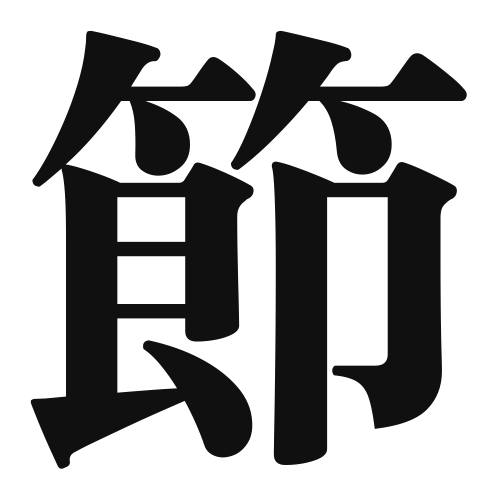1. Overview of Meaning
The kanji “節” (setsu) generally means “section,” “node,” or “season.” It can refer to a part of something, a time period, or a specific occasion, often indicating a division or a point of change.
2. Formation and Radical
The kanji “節” is a compound character, which means it is formed by combining different elements. It is classified as a 会意文字 (ideogram), which combines meanings from its components. The left part, “竹” (take), represents bamboo, while the right part, “節” (setsu), indicates a joint or node, symbolizing the segments of bamboo.
The radical of “節” is “竹” (bamboo), which is often associated with flexibility and resilience, reflecting the nature of the word itself.
3. Examples of Usage
Common words and phrases that include “節” are:
- 節約 (setsuyaku) – saving, economizing
- 季節 (kisetsu) – season
- 節目 (setsum) – milestone, turning point
Example sentences in daily conversation:
- この季節はとても美しいです。 (Kono kisetsu wa totemo utsukushii desu.) – This season is very beautiful.
- 私たちは節約する必要があります。 (Watashitachi wa setsuyaku suru hitsuyou ga arimasu.) – We need to save money.
4. Synonyms and Antonyms
Similar kanji with related meanings include:
- 部分 (bubun) – part, which refers to a segment of a whole but does not carry the seasonal or temporal connotation of “節.”
- 時期 (jiki) – period, which refers to a specific time frame but is more general than “節.”
Antonyms include:
- 全体 (zentai) – whole, which represents the entirety rather than a section.
5. Cultural and Historical Background
The kanji “節” has significant ties to Japanese culture, particularly in the context of seasons and festivals. For example, “節分” (setsubun) is a traditional event marking the beginning of spring, where people throw beans to drive away evil spirits.
Proverbs and idiomatic expressions that include “節” are:
- 節を守る (setsu o mamoru) – to keep one’s promise or commitment, emphasizing the importance of maintaining one’s word.
